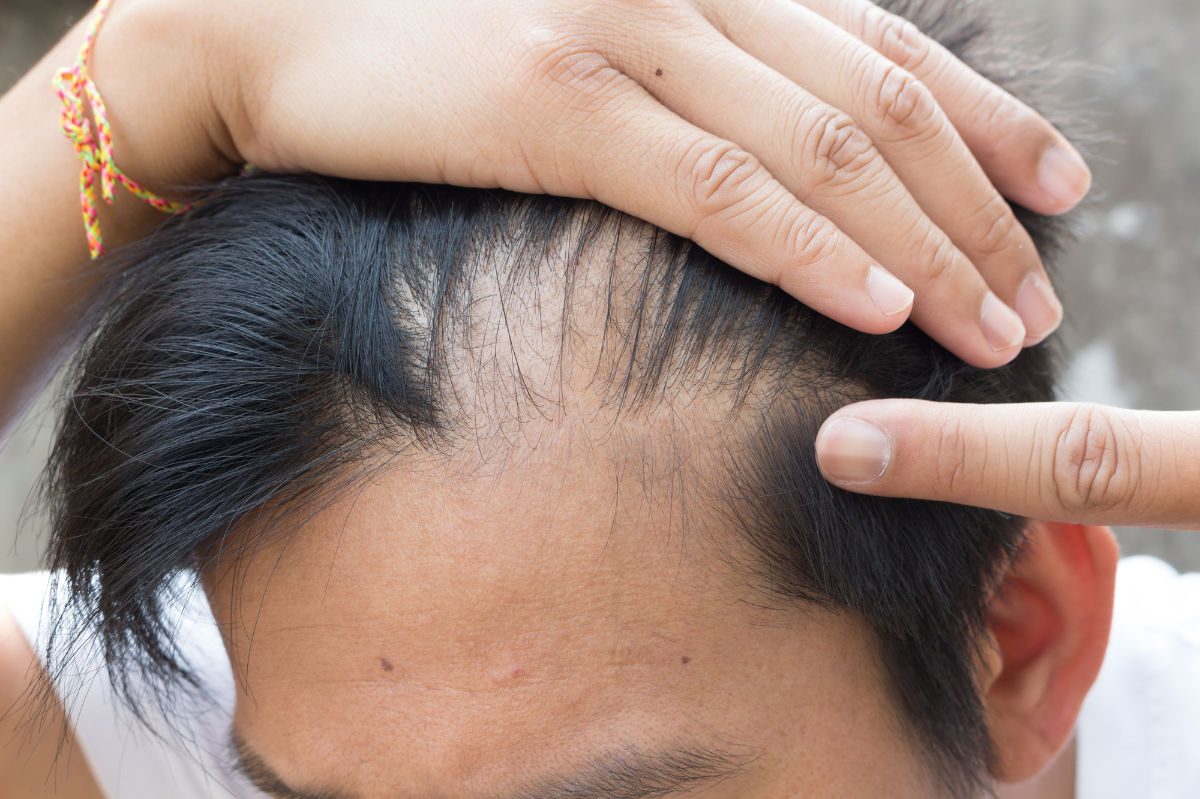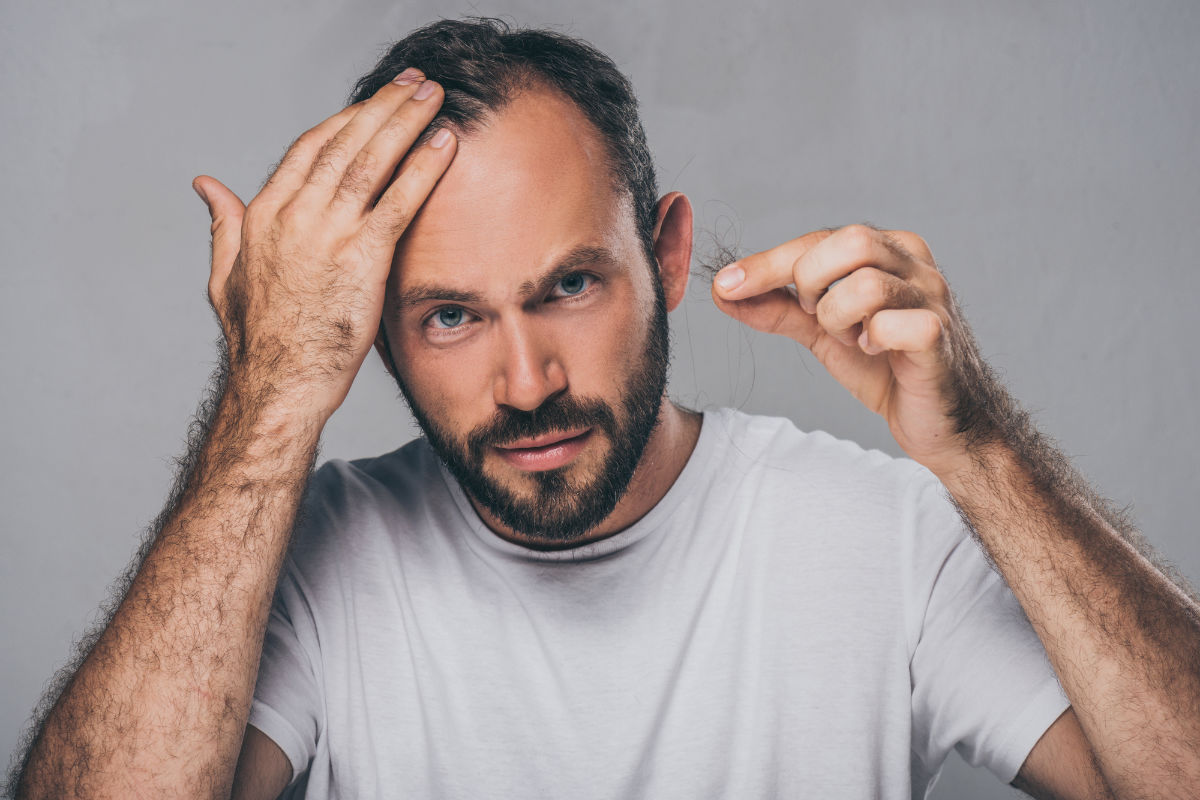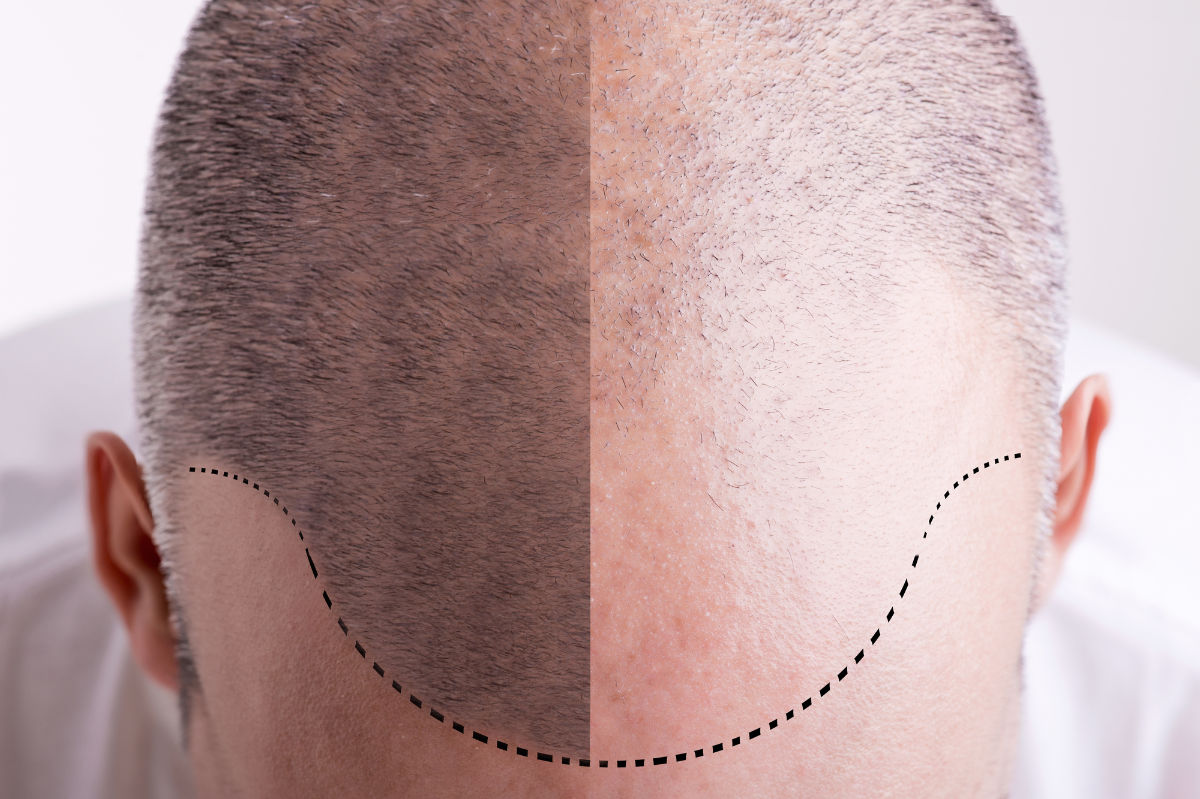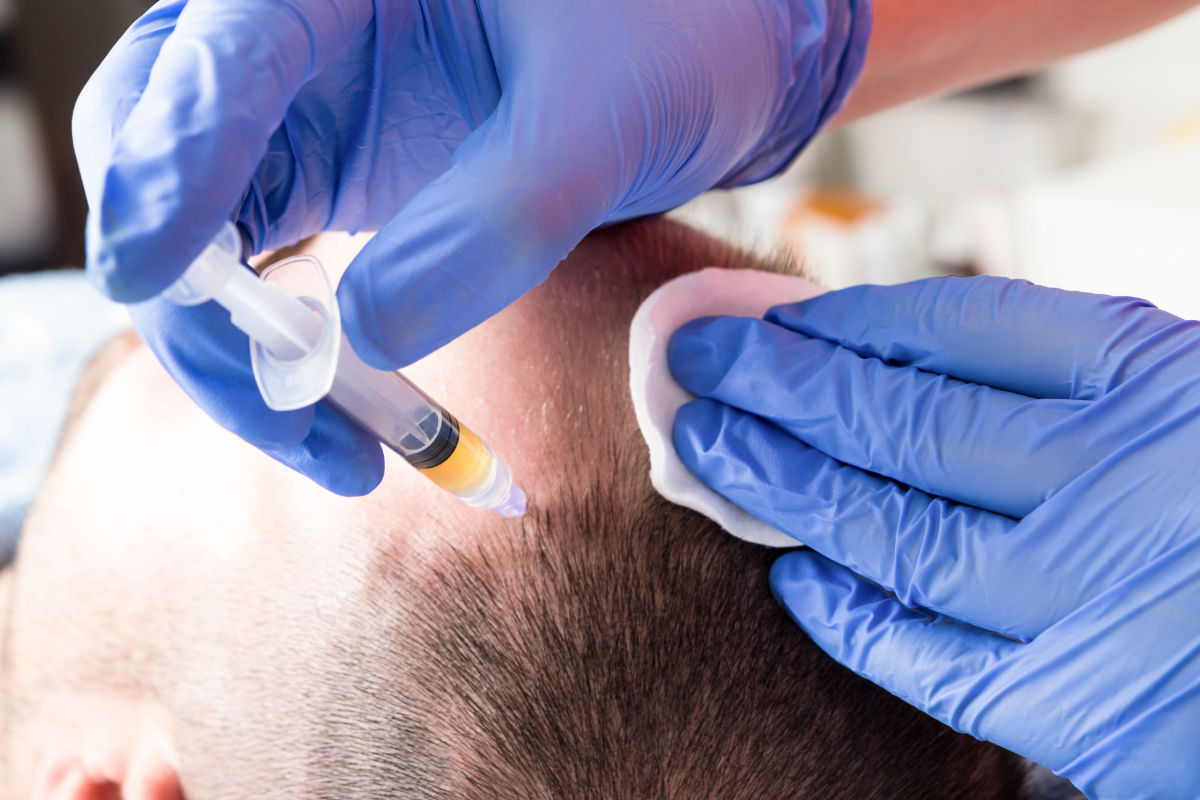For many people, hair plays a significant role in appearance, personality, and confidence. However, millions of men experience hair loss as they age, which can be a devastating blow to their self-esteem.
Most men experience a common type of hair loss called male pattern baldness or androgenic alopecia by the age of 50. The loss is often genetic, but there are other causes of hair loss that could produce a receding hairline or a thinning through the crown.
Thankfully, science and technology provide options for men who want to maintain their hair and promote growth for new, thicker strands.
What Is Male Pattern Baldness?

Androgenic or androgenetic alopecia is the most common type of hair loss for men. It occurs when hormone levels change as men get older. Hair loss is a natural part of the ageing process, though the experience can distress some people.
More than 50% of men will have some hair loss as they mature, with the loss becoming more prominent after middle-age. Male pattern baldness is an inherited condition, so those who have balding relatives, particularly on their mother’s side, are more likely to experience hair loss during their lifetime.
Causes of Male Pattern Hair Loss
The primary cause of male pattern baldness is genetics. The condition is associated with male hormones called androgens, which help regulate hair growth.
As men age, their scalp hair becomes overly sensitive to these hormones. The main culprit is dihydrotestosterone (DHT), an offshoot of testosterone. When a sensitive hair follicle has exposure to testosterone, it responds by shrinking, making the hair shorter and finer.
Hair has a growth cycle where follicles push hairs out until they shrink and slow their growth. After resting for several months, the hair will shed from the scalp through washing or brushing, and new hair will grow. Unfortunately, male pattern baldness causes hair to shed without producing new strands.
Other causes for male pattern baldness include a prostate cancer diagnosis, medication, diabetes, thyroid conditions, hypertension, stress, and malnutrition. Hair loss is normal, but anyone who suspects their male pattern baldness results from an underlying medical issue should consult with a doctor or medical professional.
Signs of Male Pattern Baldness

Men with male pattern baldness will see hair loss around their hairline, specifically around their temples. Their hairline may form the shape of an “M,” with the hair around the temples pushing back further than the hair in the middle. Some men will have a bald spot on the top of their head.
Another way to tell if male pattern baldness is present is if the hairline and bald spot thin out enough to form the shape of a horseshoe with the remaining hair around the sides and back of the head. The degree of hair loss will vary by person, but it’s important to remember that male pattern hair loss occurs when hair thins in specific places. The hair loss isn’t random.
What Are Treatment Options for Male Pattern Hair Loss?
Losing hair is a natural part of ageing, even though it’s different for all men. Some men embrace their mature hairlines and thinning crowns, while others are less confident in their changing appearance. If you are not comfortable living with male pattern baldness, treatment is available.
Options include medications, surgery, and PRP treatments.
Minoxidil
Men and women know minoxidil by its over-the-counter product name: Rogaine. It’s a foaming topical scalp treatment you can purchase at many retailers.
It works best on thinning hair around the head’s crown. It can slow hair loss overtime for some men by stimulating hair follicles to grow new, thicker hair. Minoxidil takes about four to 12 months to produce visible results, but baldness can occur again if you cease taking the medication.
Minoxidil can treat male pattern baldness, but it has some side effects, including:
- Headache
- Chest pain
- Skin issues like dryness or itchiness
- Weight gain
Finasteride
As a 5-Alpha Reductase Inhibitor, finasteride is a prescribed medication for treating hair loss. It prevents DHT from shrinking hair follicles by blocking the male hormone from reaching the scalp.
The wait time to see results from finasteride is about six months as long as you take the one-milligram tablet once daily for a minimum of three months. Like minoxidil, you may experience further balding if you stop taking finasteride.
Adverse effects of the pill include headache, skin rashes, and facial swelling. Sexual dysfunction in men is a rare but possible occurrence.
Hair Transplantation

A hair transplant is a last resort option to address male pattern baldness. It’s an expensive, invasive procedure that involves surgery.
A doctor will perform the transplant by removing hairs from the back of the scalp, which is more resistant to male hormones. The medical professional will then graft the strands into the balding areas of the scalp. The donated hairs maintain their resistance to androgens and are not likely to fall out.
Doctors perform transplants in two ways. They may surgically remove a bit of skin from the scalp that contains hairs and graft it into the bald area or remove individual hairs to prevent scarring. Though transplantation is a costly procedure that’s usually not covered by medical insurance, it will generate new hair growth.
PRP Treatments

PRP (platelet-rich plasma) treatments are a three-step process that helps hair loss in men and women.
- A nurse draws blood from the patient’s arm.
- The blood goes into a centrifuge to separate its platelets.
- A doctor performs micro-needling to the patient’s entire scalp and injects the platelet-rich plasma into areas that have hair loss.
When cosmetic nurses perform the treatment, they make careful PRP injections into hair follicles to contact the root. They use a fine needle for the procedure and make shallow injections, so discomfort is minimal if it’s present at all.
Micro-needling and PRP injections can stimulate natural hair growth in men with androgenic alopecia, inherited hair loss, and stress-related hair loss. The process increases blood flow to hair follicles to promote thicker shafts on hair strands and encourage new hair growth. The platelet-rich plasma contains several proteins and growth factors like white blood cells that increase the body’s tissue repair.
It’s a safe and effective way to regrow hair, especially when hair loss is at its earliest stages. Men and women with hair loss or thinning hair can benefit from non-surgical PRP treatments.
Patients don’t experience any discomfort during the PRP treatment process, which can take about an hour, though patients have scalp soreness on rare occasions. Once the process is complete, you can continue your daily activities immediately because there’s no downtime or recovery period. Patients’ only requirements are not shampooing their hair or participating in strenuous activities for 12 hours after receiving treatment.
For the best results, patients will need PRP treatments six to 12 times every two to three weeks. In some cases, another treatment is necessary after three months to ensure optimal results.
FAQs
Is male pattern hair loss preventable?
If you’re balding due to inherited genes, there’s little you can do to stop hair loss. However, you can maintain the health of your remaining hairs by eating a balanced diet to reduce the effects of hypertension and diabetes and avoid shampoos with chemicals that strip the hairs of healthy oils.
Some experts believe that stress will worsen the effects of male pattern hair loss because it causes the body to produce more of the hormone that causes androgenetic alopecia. While relaxation will not prevent hair loss or promote hair growth, calming activities may reduce the hormone’s production.
At what age does androgenetic alopecia male pattern baldness typically occur?
More than half of the male population is likely to have some male pattern baldness by the age of 50, but that’s not a guarantee every man will experience extensive hair loss. Men can have a mature hairline at any age without having a genetic predisposition.
It’s possible to detect signs of male pattern baldness around the hairline as early as age 17, though symptoms typically begin somewhere between age 25 to 35. Men with male pattern baldness will lose more hair as they get older.
What’s the difference between male pattern baldness and a receding hairline?
If you notice your hair is thinning all over your head, you may have alopecia. Alopecia is a type of hair loss that doesn’t produce a thinning with a specific pattern. You may have clumps of hair coming out from any part of the scalp, but it’s often temporary hair loss.
On the other hand, androgenetic alopecia is male pattern hair loss that occurs in specific areas of the scalp, most notably around the head’s hairline and crown. This type of hair loss is treatable with medication or PRP treatments.
Conclusion
Male pattern baldness is a common problem that stems from everything, from stress to hormones. It can also be a symptom of underlying health issues. The good news is that there are options to address hair loss.
PRP treatments are non-invasive and have minimal side effects. The procedure will help you grow new hair using platelet-rich plasma from a small sample of your blood and experienced medical professionals’ skills.




